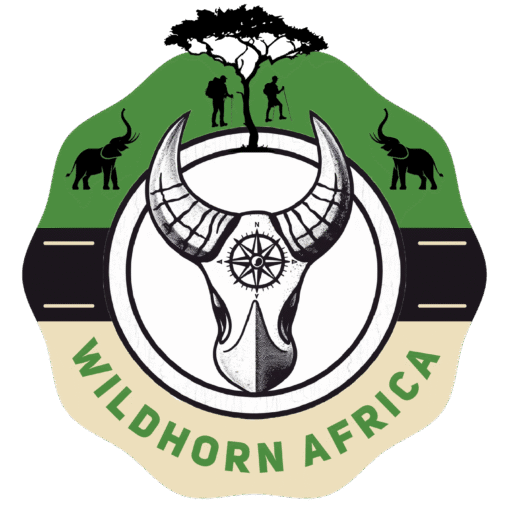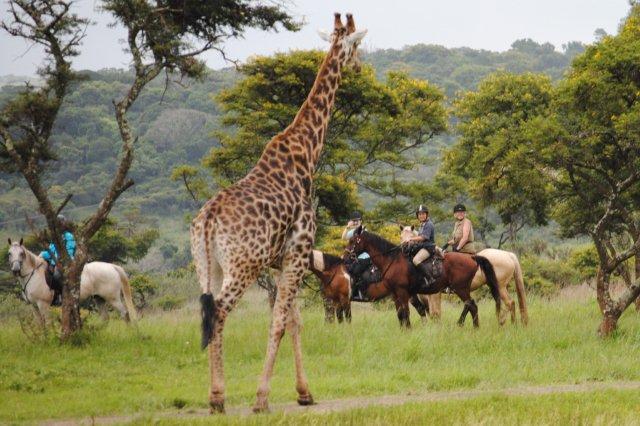How Long Should a Uganda Safari Be? | Complete Uganda Safari Duration Guide 2026
To experience Uganda is to enter a world where nature’s rhythms replace the clock, where time is measured not in hours but in moments — the moment a mountain gorilla meets your gaze, the moment the Nile’s mist touches your face, the moment the sun sets over savannahs alive with silhouettes. And yet, for travelers planning their journey, a practical question arises: how long should a typical Uganda safari be for a truly satisfying experience?
Uganda, often called the “Pearl of Africa,” is not a destination one rushes through. Its allure lies in variety — from mist-covered rainforests and volcanic peaks to vast plains and serene crater lakes. Each region tells a different story, and every ecosystem demands its own pace of exploration. Unlike countries built around one dominant park, Uganda offers a mosaic of experiences: gorilla trekking, chimpanzee tracking, classic game drives, birding, river safaris, mountain hikes, and cultural encounters.
To fully appreciate this diversity, time is essential. This article provides a deeply detailed look at how long a Uganda safari should ideally last, examining the balance between travel logistics, activities, geography, and depth of experience — ensuring travelers find not just a trip, but a rhythm that allows Uganda to unfold in its natural grace.
Understanding Uganda’s Safari Landscape: The Journey Beyond Distance
Uganda’s charm lies in its contrasts — it is compact, yet immensely varied. Stretching from the snow-capped Rwenzori Mountains in the west to the savannah plains of Kidepo in the northeast, the country offers landscapes that shift dramatically within a single day’s drive.
However, while Uganda’s size might appear manageable on a map, its travel dynamics require careful timing. Many of its most captivating destinations — like Bwindi Impenetrable National Park or Murchison Falls — are located in remote areas, accessible via scenic yet winding roads. This means that journeys between parks often take longer than expected.
For example, traveling from Kampala to Bwindi can take between 8 and 10 hours by road. Although domestic flights shorten this to about an hour, most travelers prefer to drive, not only for affordability but also for the opportunity to witness Uganda’s heartland — its terraced hills, banana plantations, and vibrant roadside villages.
Understanding this balance between distance, diversity, and discovery is key to planning a safari that feels complete rather than compressed.
Short Uganda Safaris: 3 to 5 Days of Focused Wonder
A short safari in Uganda — typically lasting three to five days — is ideal for travelers with limited time or those focusing on a specific highlight such as gorilla trekking or wildlife viewing in a single region.
For many, the dream begins with mountain gorilla trekking, Uganda’s signature experience and one of Africa’s most profound wildlife encounters. Most gorilla safaris center around Bwindi Impenetrable National Park or Mgahinga Gorilla National Park, both located in the southwestern corner of the country.
A 3-day gorilla trekking safari usually includes travel to Bwindi, one day of trekking, and the return journey. While brief, it delivers an unforgettable glimpse into Uganda’s soul — the misty forests, the dense silence before the gorillas appear, and the intimacy of standing just meters from these gentle giants.
Alternatively, a 4- to 5-day itinerary might combine gorilla trekking with Queen Elizabeth National Park, where tree-climbing lions and the Kazinga Channel’s hippos offer contrast to the forest experience. Such short safaris emphasize intensity over range — perfect for travelers seeking deep moments rather than broad coverage.
However, while short safaris are fulfilling, they leave many of Uganda’s treasures untouched. To truly feel the country’s rhythm, travelers often choose to extend their stay.
Medium-Length Safaris: 6 to 9 Days of Balanced Exploration
For those seeking a well-rounded Uganda experience, a 6- to 9-day safari offers the perfect balance between adventure and relaxation. This duration allows travelers to explore multiple national parks without feeling rushed, immersing themselves in both primate tracking and traditional game viewing.
A typical medium-length safari might begin with the mighty Murchison Falls National Park, where the Nile River explodes through a narrow gorge before flowing into serene plains teeming with elephants, giraffes, and buffalo. Visitors can enjoy a mix of boat cruises, game drives, and scenic viewpoints before continuing southward through Kibale Forest, known as the primate capital of East Africa.
Here, travelers encounter chimpanzees in their natural habitat — playful, intelligent, and fascinating to watch. The forest itself brims with life, from butterflies to birds, offering an immersive sensory experience.
From Kibale, the journey continues to Queen Elizabeth National Park, Uganda’s most visited reserve. It combines open savannah with volcanic crater lakes and lush forest corridors. The park’s highlights include boat safaris along the Kazinga Channel, where one can witness herds of elephants bathing and pelicans skimming the water’s surface.
The safari might then conclude in Bwindi Impenetrable Forest, home to half of the world’s remaining mountain gorillas. Ending the trip with gorilla trekking creates a natural crescendo — a finale of emotion, connection, and reflection.
This duration gives travelers time to rest between activities, enjoy the scenic drives, and absorb Uganda’s diverse landscapes and communities. It is often considered the sweet spot for first-time visitors seeking depth without the intensity of long overland travel.
Extended Safaris: 10 to 16 Days of Deep Immersion
For travelers who wish to truly experience Uganda in its fullness, a 10- to 16-day safari represents the most rewarding option. Such a journey transforms travel into transformation — moving beyond sightseeing into true immersion in Uganda’s geography, wildlife, and culture.
Extended safaris often begin in Kampala or Entebbe, then follow a circular route through Uganda’s western and northern circuits. The first leg typically includes Murchison Falls National Park, where the journey along the Nile sets the tone for grandeur. Visitors witness lions, leopards, and elephants against dramatic river backdrops, followed by sunset boat cruises.
The route then proceeds to Kibale Forest for chimpanzee tracking before heading to Queen Elizabeth National Park, where the savannah transitions into forested gorges. Here, travelers explore the Ishasha Sector, famous for its tree-climbing lions, before continuing to Bwindi Impenetrable National Park for the iconic gorilla trek.
After encountering the mountain gorillas, the adventure often continues eastward to Lake Bunyonyi, a tranquil retreat surrounded by terraced hills, ideal for canoeing or resting after days of trekking.
For travelers with more time, the journey can expand northward to Kidepo Valley National Park, one of Africa’s most isolated yet awe-inspiring wilderness areas. Located near the borders of South Sudan and Kenya, Kidepo offers raw, untouched beauty — golden grasslands, rugged mountains, and wildlife interactions unmarred by crowds.
A 14- to 16-day safari can also include Mount Elgon, Sipi Falls, or community-based tourism experiences with the Batwa, Karamojong, or Ankole pastoralists. These encounters add cultural depth, allowing travelers to engage with Uganda’s heritage beyond wildlife.
This length of safari rewards those who travel not only to see but to feel — who wish to understand Uganda’s landscapes, rhythms, and people on an intimate level.
Geographic Diversity and the Need for Time
One reason Uganda demands time is its sheer geographic variety. Unlike destinations where wildlife experiences cluster in one region, Uganda’s attractions are distributed across the country’s four corners.
The southwest is home to the gorilla highlands and volcanic peaks; the west-central corridor features rainforests, crater lakes, and chimpanzee habitats; the northwest presents the Nile’s grandeur; and the northeast reveals dry savannahs and semi-desert ecosystems.
This distribution means that even a well-planned itinerary involves travel days between parks — not wasted time, but opportunities to witness Uganda’s authentic countryside life.
Each leg of the journey tells its own story: schoolchildren waving by the roadside, farmers tending banana plantations, boda-boda riders weaving through towns, and villages alive with song and color. These moments between destinations often become travelers’ most cherished memories — a reminder that in Uganda, the journey is as beautiful as the destination.
Factors Influencing Safari Duration
Determining the ideal safari length depends on several intertwined factors: interests, fitness, travel style, and season.
For those focused solely on gorilla trekking, a 3-day trip suffices, though many travelers choose longer stays to acclimatize and rest before and after trekking.
Adventure travelers may combine gorilla and chimpanzee tracking, game drives, and hiking, requiring at least 8 to 10 days. Photographers often extend their trips to capture changing light, wildlife behavior, and cultural portraits.
Families and older travelers might prefer a slower-paced itinerary with rest days and fewer transfers. Luxury safaris often feature fly-in routes that shorten travel time between destinations, allowing a 7-day trip to feel as rich as a 10-day overland safari.
The season also matters. During the wet seasons (March to May, October to November), roads in remote areas can be slower, requiring flexible schedules. The dry seasons (June to August, December to February) allow smoother travel and longer daily drives.
Ultimately, the most satisfying safaris are those paced to balance activity with reflection — giving travelers time to appreciate not just Uganda’s sights, but its soul.
The Value of Slow Travel in Uganda
In an era of hurried tourism, Uganda invites travelers to slow down. The country’s beauty reveals itself gradually, through patient observation — the rustle of bamboo in Mgahinga, the stillness of a crater lake at dawn, the unhurried stride of a buffalo across the savannah.
A slower safari allows space for unplanned discoveries: a spontaneous village visit, a coffee plantation tour, or a cultural dance under the stars. These are not add-ons but the essence of Uganda — authentic, spontaneous, and deeply human.
Travelers who spend 10 days or more often describe feeling transformed by the country’s rhythm. Time in Uganda is not measured by kilometers covered, but by connections made — with guides, communities, and landscapes.
To rush through Uganda is to miss its heartbeat; to travel slowly is to hear it clearly.
Sample Safari Duration Recommendations
Though there is no fixed formula, the following guidelines provide perspective on how different safari durations align with traveler goals:
-
3 to 5 Days: Ideal for focused trips, especially gorilla trekking or short wildlife experiences.
-
6 to 9 Days: Balanced itineraries combining primate tracking, game viewing, and scenic drives.
-
10 to 14 Days: Immersive adventures exploring multiple parks and cultural regions.
-
15+ Days: Extended expeditions covering both classic and remote destinations like Kidepo or Mount Elgon.
Each duration offers a different layer of Uganda’s story. The more time you give her, the more she gives back.
The Role of Expert Planning and Guided Safaris
Choosing the right safari operator can make all the difference in crafting a fulfilling experience within your available time. Experts such as WildHorn Africa tailor itineraries to match individual preferences, ensuring that each day flows seamlessly from one highlight to the next.
Their experience in logistics, local culture, and wildlife behavior transforms ordinary travel into meaningful exploration. Whether it’s coordinating permits for gorilla trekking, arranging fly-in transfers, or selecting lodges that balance comfort and proximity to nature, professional guidance ensures that every moment counts.
A well-planned safari does not feel rushed or repetitive — it feels intentional, with each experience building upon the last, revealing Uganda layer by layer.
The Emotional Arc of a Well-Timed Safari
Beyond logistics, the emotional structure of a Uganda safari unfolds like a symphony. The journey begins with curiosity and builds toward awe, ending in reflection.
Starting in the open plains of Murchison Falls or Queen Elizabeth provides excitement — the thrill of encountering lions, elephants, and hippos. As the days progress, the focus deepens into intimacy — tracking chimpanzees, listening to forest birds, and finally meeting mountain gorillas face-to-face.
This crescendo of connection, followed by quiet relaxation at a place like Lake Bunyonyi or the shores of the Nile, gives the safari emotional balance. Too short a trip truncates this arc; too long without pacing may fatigue the traveler. The ideal safari length creates a natural flow — adventure, awe, reflection, and renewal.
Uganda’s Timelessness: Why Time Feels Different Here
Perhaps the most remarkable thing about Uganda is that time feels slower here — not because of inefficiency, but because life follows nature’s rhythm. The sun dictates the day, not the clock. Conversations linger longer. Journeys take their time.
Travelers often describe leaving Uganda with a changed sense of time — realizing that satisfaction does not come from speed or quantity, but from depth. Spending 10 days or more in Uganda allows this realization to take root.
The country teaches patience, perspective, and presence — qualities often lost in modern travel. In that sense, the ideal safari duration is not just about days spent, but about the transformation it invites.
Conclusion: Finding the Perfect Rhythm for Your Uganda Safari
So, how long should a typical Uganda safari be for a satisfying experience? The answer lies not in a number but in intention.
For a taste of Uganda’s essence, 5 days can deliver wonder. For balance and variety, 8 to 10 days provide harmony. For depth and transformation, 12 to 16 days unfold the full melody of the Pearl of Africa.
The longer one stays, the more Uganda reveals — not just her wildlife, but her warmth, resilience, and quiet majesty.
To ensure every moment counts, travelers are encouraged to book their Africa tours and safaris with WildHorn Africa, whose expertise turns itineraries into experiences and journeys into stories worth remembering.
Because in Uganda, satisfaction is not measured in days, but in how deeply those days are lived.





 WildHorn Africa – Authentic and unforgettable tours across Africa, guided by local experts who know the land, wildlife, and culture best.
WildHorn Africa – Authentic and unforgettable tours across Africa, guided by local experts who know the land, wildlife, and culture best.


